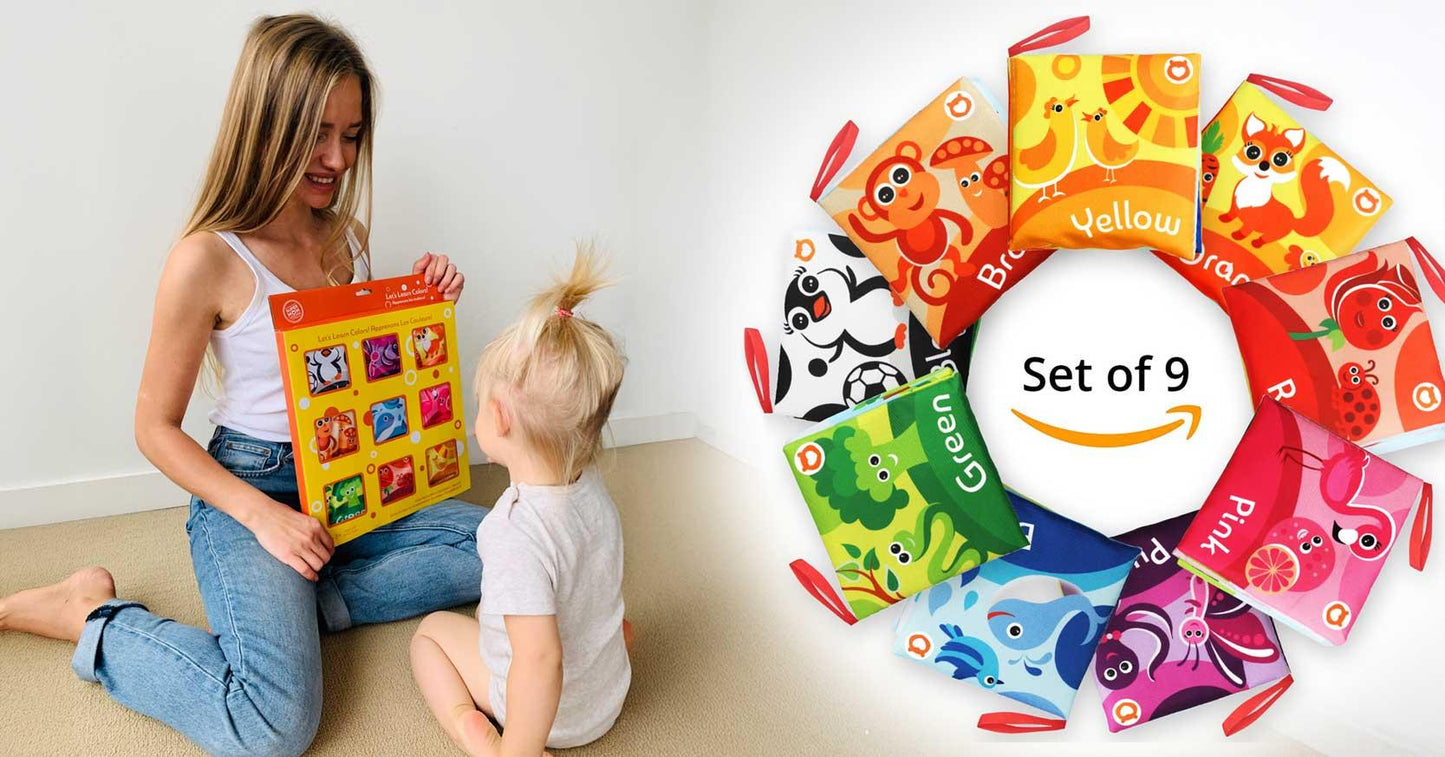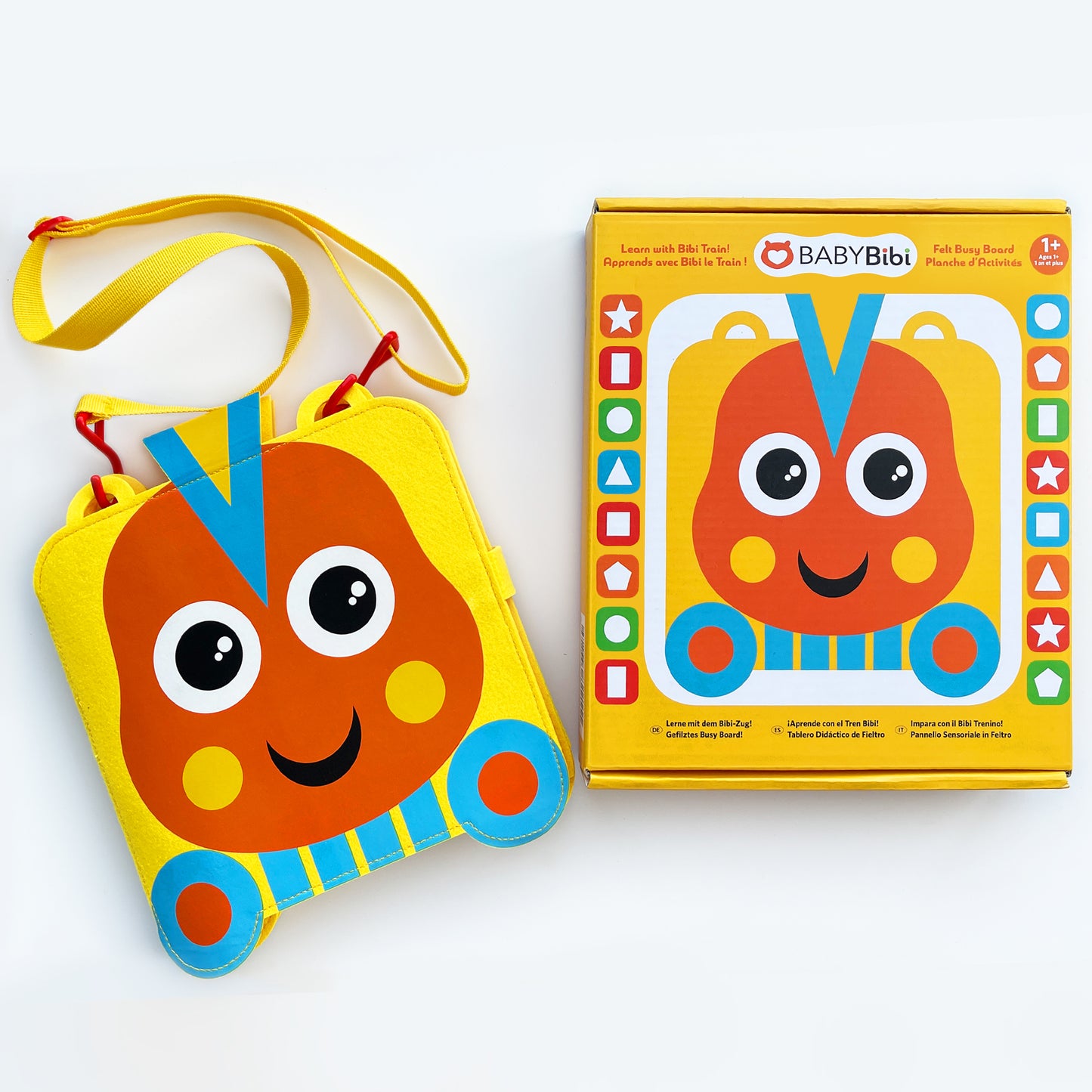
Why Is It Important to Teach Your Baby Colors?
Introduction
Have you ever noticed how your baby’s face lights up when they spot a bright red ball or a yellow duck in the bath? There’s something magical about those "aha!" moments, isn’t there? We’ve all wondered if an early game of “which block is blue” actually does much more than pass the time—or if it just looks adorable in photos. Honestly, finding ways to support your little one’s learning can sometimes feel overwhelming (especially on very little sleep!). That’s why this post is here: to break down exactly why teaching your baby colors matters—and how you can easily weave color learning into the chaos of everyday life. Simple, fun, and real. Promise.Key Points
- Teaching colors supports language development, memory, and emotional skills — not just color recognition.
- Babies learn best through sensory-rich, playful experiences that fit naturally within daily life.
- Early color learning boosts confidence and curiosity, creating a solid foundation for future cognitive development.
- You don’t need fancy tools — simple toys, books, and routines can make learning fun and stress-free.
- Making color naming part of your parenting can strengthen your connection with your baby and help track milestones.
- Current trends point to technology and wellness approaches, but simple, hands-on play is still key for toddlers.
- Every family’s approach will look different — the most important thing is enjoying the journey together.
Have You Ever Wondered Why Color Learning Matters for Babies?
You know those moments when your little one gets totally fascinated by a red block or smiles at a yellow duck? There’s something magical about how babies react to bright colors. Let’s talk about why teaching your baby colors isn’t just fun – it’s actually a big deal when it comes to baby development and everyday parenting wins.
Why Early Color Learning Makes a Difference
Babies are like tiny scientists; they learn about their world through exploring, touching, and – let’s be honest – sometimes throwing things. Introducing colors early on isn’t just about naming red, blue, or yellow. It’s the start of their journey into understanding the world, boosting cognitive development, and giving them a head start on language development. Can you imagine story time getting even more fun when your toddler starts pointing to the blue car or the green frog?
- Learning through play: Color games and play to learn activities make everything feel like a game (and toddlers LOVE games).
- Cognitive skills: Sorting and matching colors helps with problem-solving and memory – two superpowers they’ll use for a lifetime.
- Communication: Every time you label something – “Look, a yellow ball!” – you’re building their language skills, even before they can talk back.
Real Talk: It Doesn’t Have to Be Fancy
We all have those moments when we feel like we’re not doing enough. But honestly, you don’t need to sign up for a fancy Montessori at home class or invest in high-tech gadgets. Babies learn about colors through real, simple experiences:
- Dress-up time: Point out the color of their shirt or socks as you get ready.
- Snack time: “Here’s your orange carrot and green peas!”
- Rainy day activities: Sort blocks, stack cups, or flip through cloth books together (these are especially great for little hands – easy to grab, chew, and squish!).
- Nature walks: “Can you find a green leaf? How about a blue flower?”
How Color Play Helps You (Not Just Baby!)
- Quiet Time Saver: Let’s face it, sometimes you need a breather. Color matching games or flipping through colorful books can buy you a few golden minutes.
- Easy Distraction: Waiting at the doctor or stuck in traffic? Ask your little one to find something red around them.
- Mess-Proof Activities: No glitter required. Just point out colors wherever you are.
The "Why" Behind the Trend: What’s Changing for Parents?
Parents today are embracing learning through play more than ever – and not just because it keeps kids busy. Social media is packed with quick parenting tips and real stories that make color learning feel doable for everyone. You don’t need to be a teacher to help your child grow.
- Montessori at home: More parents are using Montessori-inspired activities, and color sorting is a classic that’s easy to do, even without special materials.
- Learning is everywhere: From the produce aisle to bath time bubbles, every moment can be a toddler activity that builds color skills.
Simple Tips to Bring Color Learning Into Daily Life
- Label colors all day: “Let’s put on your blue shoes!” The more you say it, the more they learn.
- Try educational toys: Blocks, stacking rings, or soft books with different colors are perfect for sensory play (and safe for those teething munches!).
- Sort laundry together: “Let’s find all the white socks!”
- Make it a game: Sing songs about colors, or have a scavenger hunt for red, yellow, or blue things around the house.
The Bottom Line
At the end of the day, what actually matters is spending time together, having fun, and showing your child that learning is something you do together. Color learning isn’t about being perfect – it’s about helping your baby explore, communicate, and get curious about the world. So next time your toddler shows off their latest color discovery, give yourself a high-five – you’re making a difference, one color at a time!
If you want easy, mess-free ideas for colorful playtime, cloth books like the ones at BabyBibi are a great choice for busy parents and curious kids.
Conclusion: Colorful Moments, Lasting Benefits
The bottom line? Teaching your baby about colors goes far beyond naming red or blue — it sparks early learning, nurtures language development, and lays the foundation for future cognitive growth and creativity. Whether you’re playing with colorful blocks, reading a cozy cloth book together, or exploring new hues during your toddler’s activities, these little experiences build big skills!
Real Talk: Let’s be honest — parenting isn’t perfect. You might forget which color you just pointed to, or mix up teaching moments with daily routines. That’s more than okay! Every day is a fresh start, and even tiny efforts add up when it comes to baby development.
Try this today: Pick one object nearby (maybe your baby’s favorite stuffed animal or a bright spoon) and simply name its color out loud. Make it a mini game — not a lesson plan. Learning through play is what counts!
Remember, you’re your child’s favorite teacher. With a little curiosity, a pinch of patience, and playful educational toys or activities, you’re making early learning happen, one colorful moment at a time. You’ve got this!
Looking for more ideas or support on Montessori at home and play to learn? The BabyBibi community is here cheering you on every step of the way!

